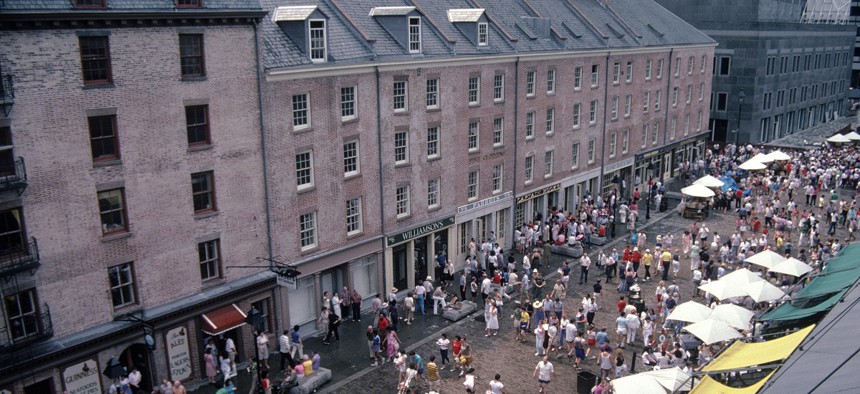New York City
A historic goal: Creating a New York City Freedom Trail
Jacob Morris, head of the Harlem Historical Society, wants to highlight the history of the Underground Railroad and a New York City Council bill may make his vision a reality.

The South Street Seaport would be included in a Lower Manhattan Freedom Trail, as envisioned by Jacob Morris, head of the Harlem Historical Society Barry Winiker
Millions of visitors come to New York City each year, and many come without knowing that the buildings they walked by or the streets they crossed were essential parts of the underground railroad and the abolition of slavery.
Jacob Morris, head of the Harlem Historical Society, aims to change that. "I think it's important for us to be aware of New York City’s critically important role in the Underground Railroad and the abolitionist movement. Our city had a tremendous role in the railroad, and very few people know that. It's an inspiring history: the struggle for freedom against chattel slavery and for equality for Black people," Morris told New York Nonprofit Media.
Now, a bill introduced by New York City Council Member Christopher Marte, who represents District 1 in Lower Manhattan, could make Morris’ vision of city-wide and Lower Manhattan Freedom Trails a reality. The legislation proposes the creation of a task force to consider the creation of a city-wide freedom trail and a Lower Manhattan Freedom trail.
The Freedom Trails would encourage self-guided tours using maps with historic locations for visitors to learn more about historic places concerning slavery and the abolition movement. Morris notes that Boston's Freedom trail attracts more tourists than a Red Sox game.
Morris first publicly introduced his idea to the New York State Amistad Commission, a committee formed to review New York State's education curriculum regarding the African slave trade and its implications on American history in 2010. After no action was taken, Morris’ idea gained traction with the SoBro Investment Group, which gave $15,000 to the historical society which was used to map out suggested places for the Lower Manhattan trail. In 2017, then City Council Member Ydanis Rodríguez, now Department of Transportation Commissioner, introduced the legislation for the trails, but four and half years later, it was never put on the floor for a vote until now.
Marte said he hopes the trails will teach people about New York's untaught ties to slavery and the abolition movement. "I think it's really important to reckon with our past and our involvement in both movements and allow people to be educated simply by walking down the street and potentially seeing a plaque of a building or apartment that was part of the Underground Railroad," he told NYN Media. "The ignorance right now has consequences where people think it's just a Southern problem or a problem of the past, and I don't believe that as a city, as a New Yorker, we should continue to live with that type of ignorance."
The bill assigns the task force with providing recommendations and other legislation that may aid in the creation of potential freedom trails. The members will include academic scholars and representatives of institutions focused on historical, cultural, educational, religious or charitable purposes. The commissioners of cultural affairs, transportation, parks and recreation, and small business services or designees, five mayoral appointees, and three assigned by the speaker of the Council will make up the members of the task force.
Some of the suggested landmarks that the task force will consider include the South Street Seaport, where the buying and selling of slaves took place; Frederick Douglass landing, where Douglass first arrived when coming to the city; and Former Mother AME Zion Church, a stop along the Underground Railroad.
Twenty council members, including District 33 council member Lincoln Restler, are sponsoring the bill. Restler argues that celebrating the history of activism and abolitionism is essential city-wide. "Across the country, we failed to memorialize the places where the slave trade occurred, and where abolitionists fought for freedom. That history is central to the history of this country. And we are better citizens, better neighbors when we celebrate and learn from our history."
